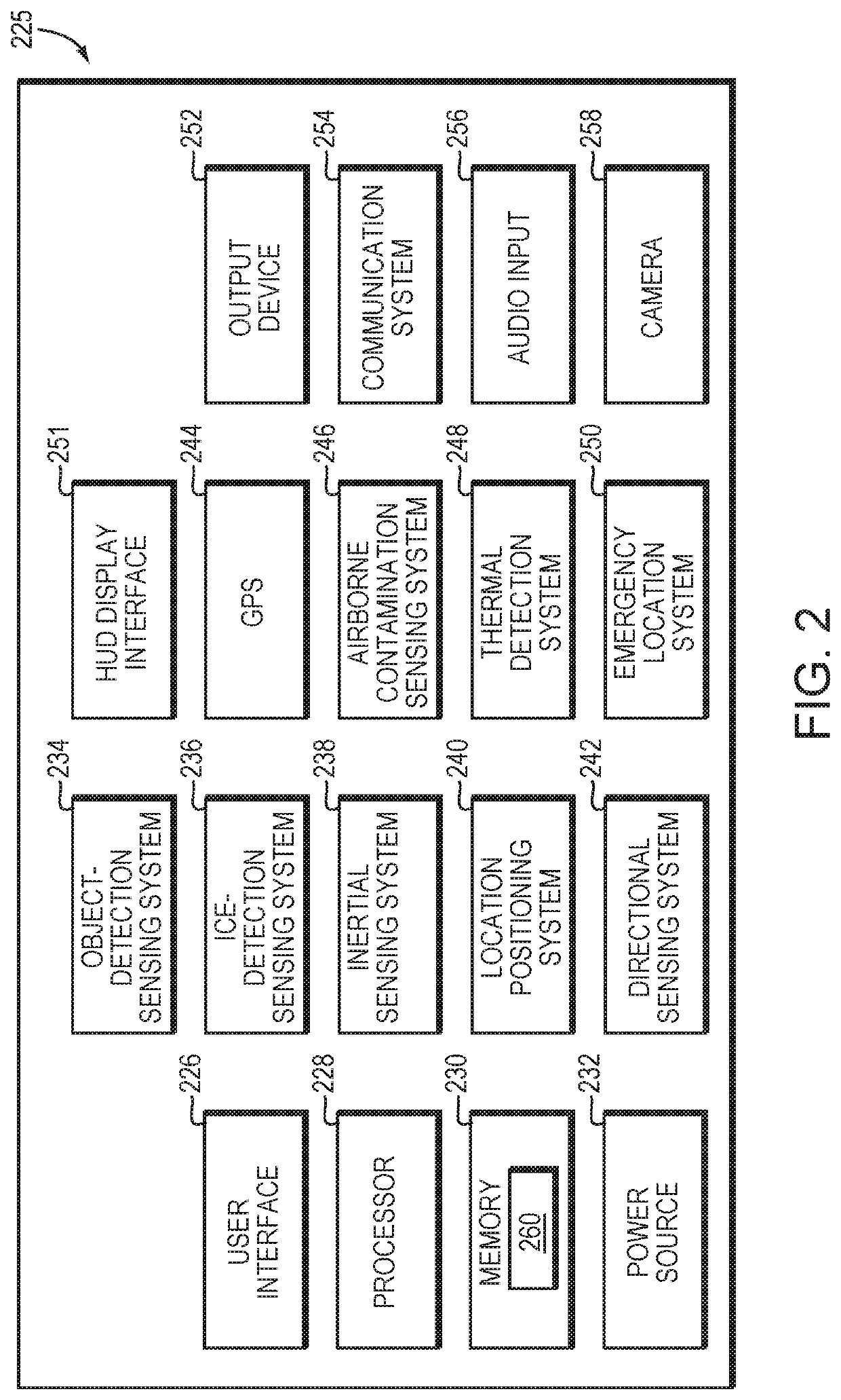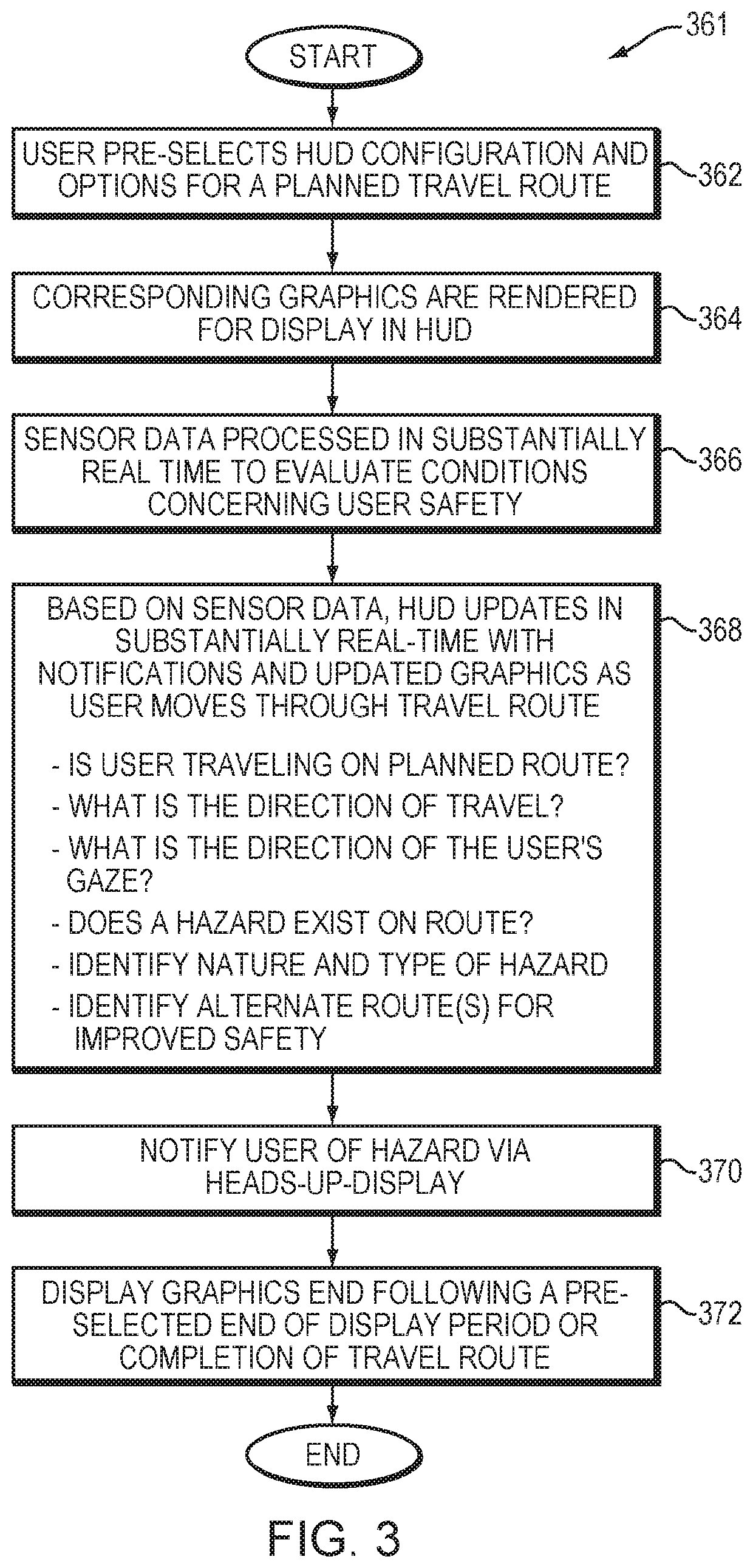Smart safety helmet with heads-up display
a safety helmet and display technology, applied in the field of smart safety helmets with heads-up displays, can solve the problems of not fully utilizing the existing structure of safety helmets in prior approaches, and achieve the effects of improving safety, improving user safety, and improving safety for fire fighters
- Summary
- Abstract
- Description
- Claims
- Application Information
AI Technical Summary
Benefits of technology
Problems solved by technology
Method used
Image
Examples
Embodiment Construction
[0020]This invention is not limited in its application to the details of construction and the arrangement of components set forth in the following description or illustrated in the drawings. The invention is capable of other embodiments and of being practiced or of being carried out in various ways. Also, the phraseology and terminology used herein is for the purpose of description and should not be regarded as limiting. The use of “including,”“comprising,” or “having,”“containing”, “involving”, and variations thereof herein, is meant to encompass the items listed thereafter and equivalents thereof as well as additional items.
[0021]Referring now to FIG. 1A, a safety system 100 is illustrated in accordance with one embodiment. The safety system 100 includes a helmet 102 and goggles 104 including a display 106. According to the illustrated embodiment, the display 106 is included as a part of the lens of the goggles 104. The helmet 102 includes a compartment 108, a slot 110 and an elec...
PUM
 Login to View More
Login to View More Abstract
Description
Claims
Application Information
 Login to View More
Login to View More - R&D
- Intellectual Property
- Life Sciences
- Materials
- Tech Scout
- Unparalleled Data Quality
- Higher Quality Content
- 60% Fewer Hallucinations
Browse by: Latest US Patents, China's latest patents, Technical Efficacy Thesaurus, Application Domain, Technology Topic, Popular Technical Reports.
© 2025 PatSnap. All rights reserved.Legal|Privacy policy|Modern Slavery Act Transparency Statement|Sitemap|About US| Contact US: help@patsnap.com



